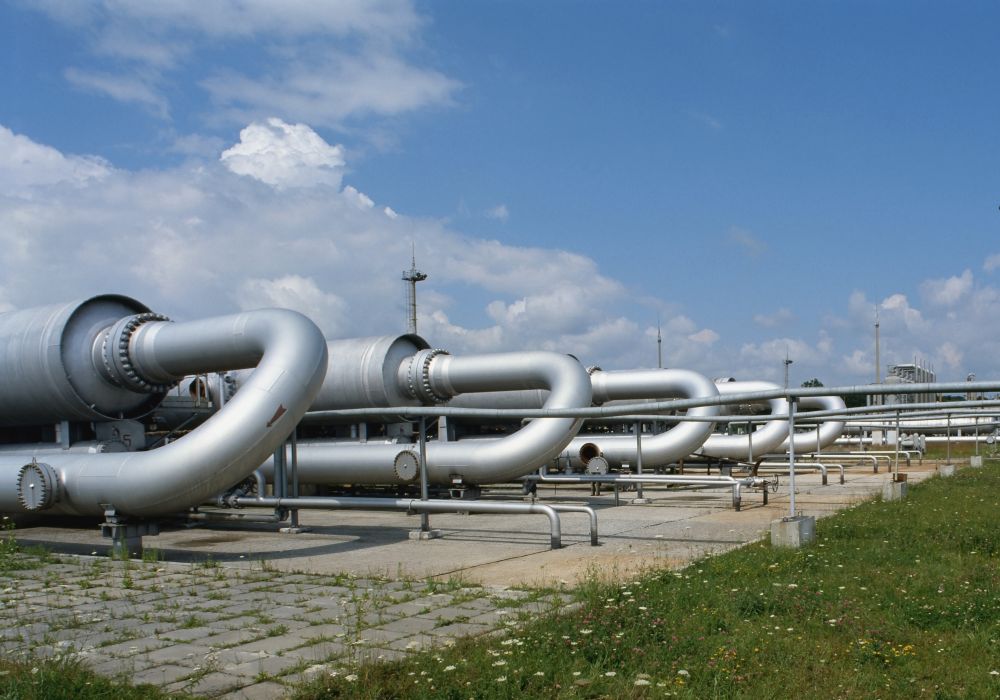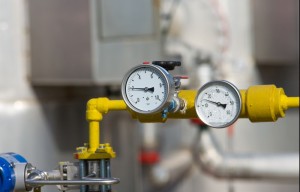
A Colorado State University-led research team has completed the most comprehensive field study to date of the amount of methane being emitted at the nation’s natural gas transmission and storage infrastructure, which includes roughly 2,000 compressor stations distributed along 300,000 miles of pipeline, underground storage facilities and other equipment.
Researchers from CSU, Carnegie Mellon University and Aerodyne Research took 1,398 on-site and 344 downwind plume measurements at 45 transmission and storage facilities throughout the country – more than three previous studies on these sectors combined. 
“Most of the scientific data we have are from studies conducted in the 1990s,” said Daniel Zimmerle, a senior researcher at the CSU Energy Institute who led the study. “This is the most complete snapshot we have of methane emissions in the transmission and storage sectors.”
Their measurement data and findings were published today in the journal of Environmental Science & Technology. Researchers are using the field measurement data to build a model that estimates national methane emissions from these sectors. Those results are expected to be published in the coming months.
“Given the size of the study, we felt it was important and useful to publish the data on our field measurements,” Zimmerle said. “However, you cannot calculate a national emissions rate for these sectors with just this data. It is one of the data sets that will feed our model, which we will discuss in depth in an upcoming paper.”
The paper is one of two CSU-led studies on methane emissions on major sectors of the U.S. natural gas supply chain published by the journal today. The other focuses on the gathering and processing sectors. More information about the studies is available at www.energy.colostate.edu.
Emissions data
During the field campaign, the research team found wide variations in the amount of methane being emitted – from two standard cubic feet per minute to 880 scfm (scfm is a volumetric rate used to calculate the amount of natural gas flowing through a facility.)
Of the 45 facilities sampled, 43 had methane emissions at or below 200 scfm. Two of the sites, however, were classified as “superemitters” and together emitted almost as much methane as the other 43 combined.
“We believe faulty valves and equipment are likely causes of the high emissions we found at these sites,” said Allen Robinson, the Lane Professor of Mechanical Engineering at CMU and the corresponding author on the paper published today.
“What this finding tells us is that superemitters can drive overall emissions,” Robinson added. “Identifying and fixing these sites could be an important part of a strategy to reduce overall emissions.”
Researchers also compared their on-site measurements to data submitted to the Environmental Protection Agency’s Greenhouse Gas Reporting Program.
The GHGRP is one of the federal agency’s two greenhouse gas programs that track methane from the natural gas system. The GHGRP requires reporting of emissions from only a select subset of emissions sources at facilities with annual greenhouse gas emissions greater than 25,000-metric -ton carbon dioxide equivalent. The other, known as the Greenhouse Gas Inventory, provides a comprehensive accounting of total greenhouse gas emissions for all man-made sources in the United States.
The team’s field measurements indicate that 2.9 times more methane was emitted at the 45 sites than when the team used the GHGRP’s method to calculate emissions.
Without the two superemitters, average methane emissions recorded during the study were lower than the EPA’s Greenhouse Gas Inventory estimate for a key subset of the inventory. When the superemitters are included, the study-average emission factors would likely exceed the GHGI net emission factors.
The team attributed the discrepancy to 1) gaps in the GHGRP’s reporting requirements – equipment in certain operating modes are excluded from reporting, 2) some of the emission factors the GHGRP uses to calculate emissions do not accurately reflect the amount of methane being emitted, 3) GHGRP methods may not consistently account for the presence of superemitters, or faulty or failed equipment.
“These factors contribute to the GHGRP underreporting of methane emissions data from transmission and storage sites, one of the largest sectors in the natural gas supply chain,” Zimmerle said. “The program is a valuable source of emissions data but it could be improved by addressing reporting exclusions and better characterization of large emitters.”
Other findings
Other key findings include:
- Methane emissions were measured both at facilities that are required to report to the GHGRP and at those that aren’t. Non-reporting sites accounted for 30 percent of aggregate methane emissions. Of the 45 sites the research team sampled, 20 (44 percent) did not meet the EPA reporting threshold of emissions greater than 25,000-metric ton carbon dioxide equivalent.
- Researchers detected methane emissions at compressor stations that were both operating and idle. Estimates based on on-site measurements indicate about 30 percent of aggregate emissions were from facilities where all compressors were idle. A facility that operates infrequently or at low load may not meet the GHGRP reporting threshold.
- Compressor valves and seal vents, reciprocating engine exhaust, and equipment leaks were the primary sources of methane emissions across all survey sites.
- Without the two superemitters, average methane emissions recorded during the study were higher than the Greenhouse Gas Reporting program, but comparable to or lower than the Environmental Protection Agency’s Greenhouse Gas Inventory estimate. When the superemitters are included, then the study-average emission factors could exceed both EPA estimates.
About the study
The CSU study is one of 16 organized by the Environmental Defense Fund to better quantify the amount of methane escaping into the atmosphere from the natural gas supply chain.
This study was sponsored by EDF, Dominion, Dow Chemical, Enable Gas Transmission Company, Kinder Morgan, Columbia Pipeline Group, TransCanada and Williams. The Interstate Natural Gas Association of America also participated in the study.